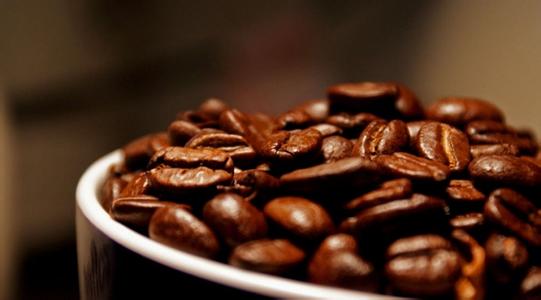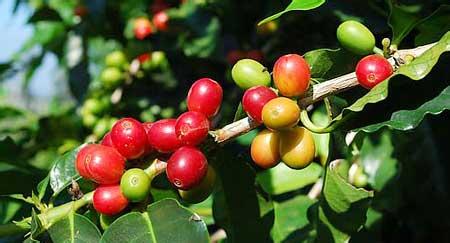Guatemala Antigua Coffee Bean Flavor Description Processing Characteristics Grinding Scale Introduction
Brief introduction of grinding scale for flavor description treatment of Antigua coffee beans in Guatemala
Coffee was really introduced into Guatemala in 1750 by Father Jesuit, where the coffee industry was developed by German colonists at the end of the 19th century. Today, most of the coffee industry's production takes place in the south of the country. Guatemala has seven main coffee producing areas: Antigua (Antigua), Cobain (Coban), Lake Attilan (Atitlan), Vevetnango (Huehuetenango), Farahan Plateau (Fraijanes), Oriente, and San Marco (San Mareos).
Generally speaking, Arabica coffee grows at an altitude of about 2000 meters, while Robusta grows at an altitude of about 900m. If the altitude is too high, the coffee tree will frost because the temperature is too low, and even can not survive. And Vivette Nanguo coffee even if planted in the highlands of nearly 2000 meters above sea level, it is not easy to appear frost phenomenon, high but not cold growth environment has created high-quality extremely hard beans. This is entirely due to the warm and dry air blowing from the Mexican plains, which protects the coffee trees here from frost.
Coffee cultivation at Incht Manor began in 1900. With a total area of 720 hectares, it maintains 470 hectares of primeval forest in order to maintain the natural and precious microclimate. To prevent the microclimate of the whole manor from being affected by excessive reclamation. The use of reasonable farming methods to protect soil nutrients, so that soil quality will not be gradually degraded by long-term cultivation, so as to maintain rich organic matter. In addition, the hardware facilities of the Incht treatment plant are complete, and the quality of the coffee is guaranteed in the later stage through orderly and scientific management. Incht is also very careful in the planting of coffee trees, whether in harvesting, pruning, or fertilization, coffee trees are carefully protected. The planting management of the whole manor has the advanced concept of symbiosis and win-win with ecology. As a result, Incht was certified by the Rainforest Alliance.

Important Notice :
前街咖啡 FrontStreet Coffee has moved to new addredd:
FrontStreet Coffee Address: 315,Donghua East Road,GuangZhou
Tel:020 38364473
- Prev

A brief introduction to the taste of Colombian coffee beans by describing the characteristics of grade and flavor
A brief introduction to the flavor description method of Colombian coffee beans the suitable climate in Colombia provides a real natural pasture for coffee. Coffee trees in Colombia are mainly cultivated in the Andes, on steep slopes about 1300 meters above sea level, where the annual temperature is about 18 degrees Celsius, annual rainfall is 2000 to 3000 millimeters, and latitude 1-11-15.
- Next

Colombia coffee producing area Flavor description Taste characteristics Processing method Variety introduction
Colombia coffee producing region Flavor Description Taste characteristics Treatment method Variety introduction Tolima farms are generally slightly larger than other southern Colombia producing farms, about 10-15 hectares. Cooperatives are also popular here, where farmers send their own small batches of fresh coffee to the cooperative's processing plant. Some farmers will also choose to deal with it themselves, using their own small-scale
Related
- Detailed explanation of Jadeite planting Land in Panamanian Jadeite Manor introduction to the grading system of Jadeite competitive bidding, Red bid, Green bid and Rose Summer
- Story of Coffee planting in Brenka region of Costa Rica Stonehenge Manor anaerobic heavy honey treatment of flavor mouth
- What's on the barrel of Blue Mountain Coffee beans?
- Can American coffee also pull flowers? How to use hot American style to pull out a good-looking pattern?
- Can you make a cold extract with coffee beans? What is the right proportion for cold-extracted coffee formula?
- Indonesian PWN Gold Mandrine Coffee Origin Features Flavor How to Chong? Mandolin coffee is American.
- A brief introduction to the flavor characteristics of Brazilian yellow bourbon coffee beans
- What is the effect of different water quality on the flavor of cold-extracted coffee? What kind of water is best for brewing coffee?
- Why do you think of Rose Summer whenever you mention Panamanian coffee?
- Introduction to the characteristics of authentic blue mountain coffee bean producing areas? What is the CIB Coffee Authority in Jamaica?

